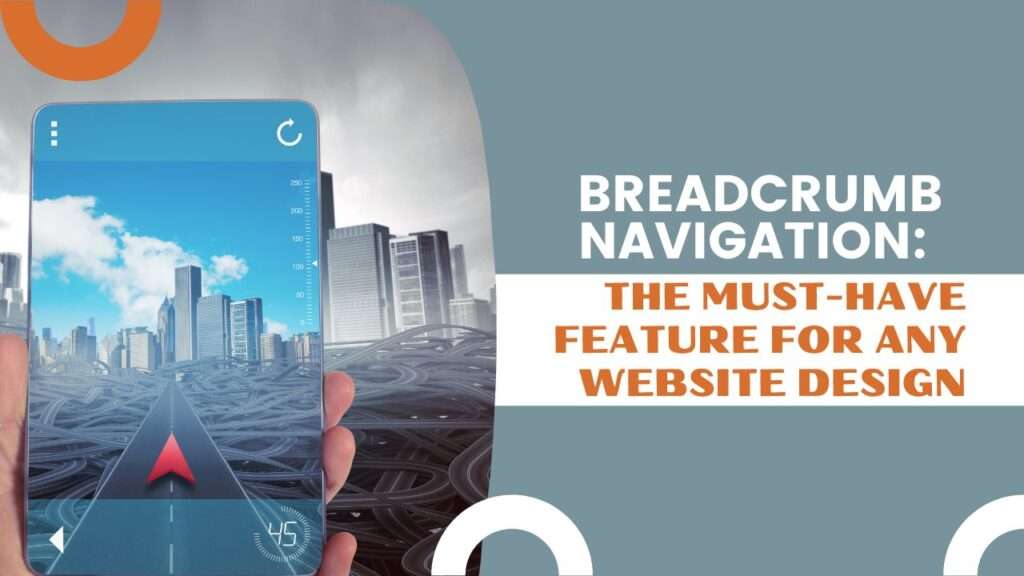When it comes to website design, there are certain elements that cannot be ignored. One of these is breadcrumb navigation – the small but mighty feature that can make or break a user’s experience on your site. It’s easy to overlook this simple tool, but incorporating breadcrumb navigation into your design can greatly improve usability and help users navigate through your content with ease. In this blog post, we’ll explore why breadcrumb navigation is a must-have feature for any website design and how it can improve user experience and ultimately drive more conversions on your site. So let’s dive in!
Introduction to Breadcrumb Navigation
Breadcrumb navigation, also known as breadcrumbs, is a type of secondary navigation scheme that reveals the user’s location in a website or document. The term comes from the Hansel and Gretel fairy tale in which the children drop bread crumbs to mark their path through the forest so they can find their way home.
Just like in the fairy tale, breadcrumbs on a website allow users to backtrack their steps to get to the page they started on. Breadcrumbs typically appear horizontally above the primary navigation, with each level of the hierarchy represented by a different link. For example, if you are on a website about animals and you click on the mammals link, your breadcrumb trail might look like this:
Home > Animals > Mammals
This would indicate that the user is currently viewing the mammals section of the animals page. If the user then clicks on the bears link within that section, the breadcrumb trail would update to look like this:
Home > Animals > Mammals > Bears
Breadcrumb navigation is a great way to improve usability on your website, especially if it has a deep hierarchy of pages. It allows users to quickly see where they are in relation to the rest of your site and makes it easy for them to navigate back to previous sections.
Benefits of Breadcrumb
Breadcrumb navigation is a great way to improve the usability of your website. It allows users to easily see where they are on your site, and navigate back to previous pages with just a few clicks.
Breadcrumb can also help improve your website’s search engine optimization (SEO). By including keywords in your breadcrumbs, you can help search engines better understand the structure of your site and index your pages accordingly.
Including breadcrumb on your website is a simple way to improve the user experience for your visitors. If you’re not already using breadcrumbs on your site, now is the time to start!
How to Implement Breadcrumb Navigation Into Your Website Design
Breadcrumb is a must-have feature for any website design. It allows users to know where they are on your site and helps them navigate back to previous pages. Implementing breadcrumb navigation into your website design is easy with these steps:
- Decide where you want the breadcrumbs to appear on your site. Typically, they are placed above the main content area or in the header.
-
Choose what information you want to include in each breadcrumb. For example, you may just want to show the page title, or you may want to include the section title and page title.
-
Add the code for breadcrumb navigation to your site template. This code will generate the breadcrumbs automatically based on the information you specify in step 2.
-
That’s it! Your website now has breadcrumb navigation implemented into its design.
Tips for Optimizing Your Breadcrumb Navigation
It is a must-have feature for any website design. By providing users with a clear and concise way to navigate your site, breadcrumb navigation can help improve the user experience and make it easier for users to find the content they are looking for. Here are some tips for optimizing your breadcrumb navigation:
- Use descriptive names for each section of your site.
-
Use consistent naming conventions throughout your site.
-
Keep it simple and easy to understand.
-
Make sure your breadcrumb navigation is visible and easy to access.
-
Test your breadcrumb navigation regularly to ensure it is functioning properly.
Alternatives to Breadcrumb Navigation
There are a few alternatives to breadcrumb breadcrumb navigations can help improve the user experience and make it easier for users to find the content they are looking forthat can be used on websites. One alternative is to use a hierarchical navigation system. This system would show the user where they are in the site structure by indenting each level of the hierarchy. Another alternative is to use a drop-down menu for navigation. This would allow the user to see all of the options available at each level of the website hierarchy.
Examples of Good Use Cases for Breadcrumb Navigation
There are many good use cases for navigation, but some are better than others. Here are a few examples of when breadcrumb navigation can be particularly useful:
• When you have a large website with many sections and subsections. It can help visitors quickly find their way around your site and understand its structure.
• When you have a complex website with lots of content. It can help visitors quickly orient themselves and find the information they’re looking for.
• When you have an ecommerce website with many products. It can help shoppers narrow down their choices and find the product they’re looking for more easily.
Conclusion
Breadcrumb navigation is a must-have feature for any website design. It provides users with an easy way to find the pages they are looking for and reduces the amount of time needed to get from one page to another. Breadcrumb also makes it easier for search engines like Google to index your website, which can help you achieve higher rankings in the SERPs. With breadcrumb navigation, you can ensure that your visitors have a smooth experience when navigating through your site and that they feel confident in knowing where they are at all times.

